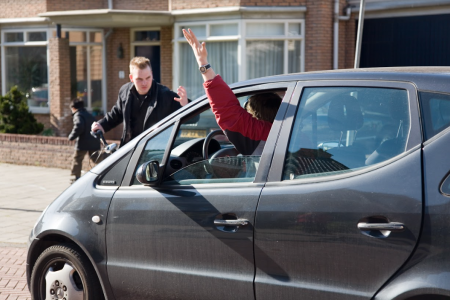Animosity, impatience and/or being in a hurry, are often motives for road user aggression [5]. Aggressive road user behaviour is mostly caused by annoyance with others and irritation about situations [6] [7] [8]. According to the Dutch National Driver Survey, the top ten grievances in 2019 were as follows [9]:
- Tailgating
- Aggressive driving
- Drug- and/or drink-driving
- Failure to indicate direction
- Driving on the left without need
- Speeding in an urban area
- Last-minute lane merging
- Overtaking on the right
- Sunday drivers
- Speed humps
The behaviour of (Light) moped riders and cyclists may also give rise to irritation. A survey in Amsterdam proved that half the respondents were annoyed by the behaviour of (light) moped riders [10]. A quarter of them were annoyed by cyclists. Respondents that do not or hardly cycle themselves were particularly annoyed by cyclists’ red light negation (45%), cycling on the pavement (35%), cycling without lights (25%), not indicating direction (24%) and not paying attention while cycling (23%) [10]. Cyclists themselves are mainly annoyed by scooters and (light) mopeds (56%), by other cyclists’ lack of attention (31%), red light negation (24%) and wrong-way cycling (23%).
Road user aggression often goes hand in hand with ‘anger’ [7] [11] [12] [13]. A road user’s anger may stem from personal characteristics or from the traffic situation. People differ in the extent to which they tend to react emotionally; this is true in traffic as well. People who generally tend to react angrily or aggressively, not only report anger but also worse anger when participating in traffic [11] [12]. Emotions may have arisen before or may arise during traffic participation [7].
In addition, anger is often a reaction to frustration attributed to someone else [6]. Frustration during traffic participation may arise when self-interest is hampered, for example by congestion, long waits at red lights or by offences or unexpected behaviour of other road users [6] [7]. Anonymity and lack of direct communication possibilities further contribute to the risk of driver aggression [14] [15].
Among cyclists, anger during traffic participation also occurs, but online questionnaire replies suggest that cyclists usually deal with their anger constructively; they accept their anger and do not let their frustration mount [16]. Aggressive reactions (verbal, physical) are more common among young cyclists, among men, and among frequent cyclists [16].
